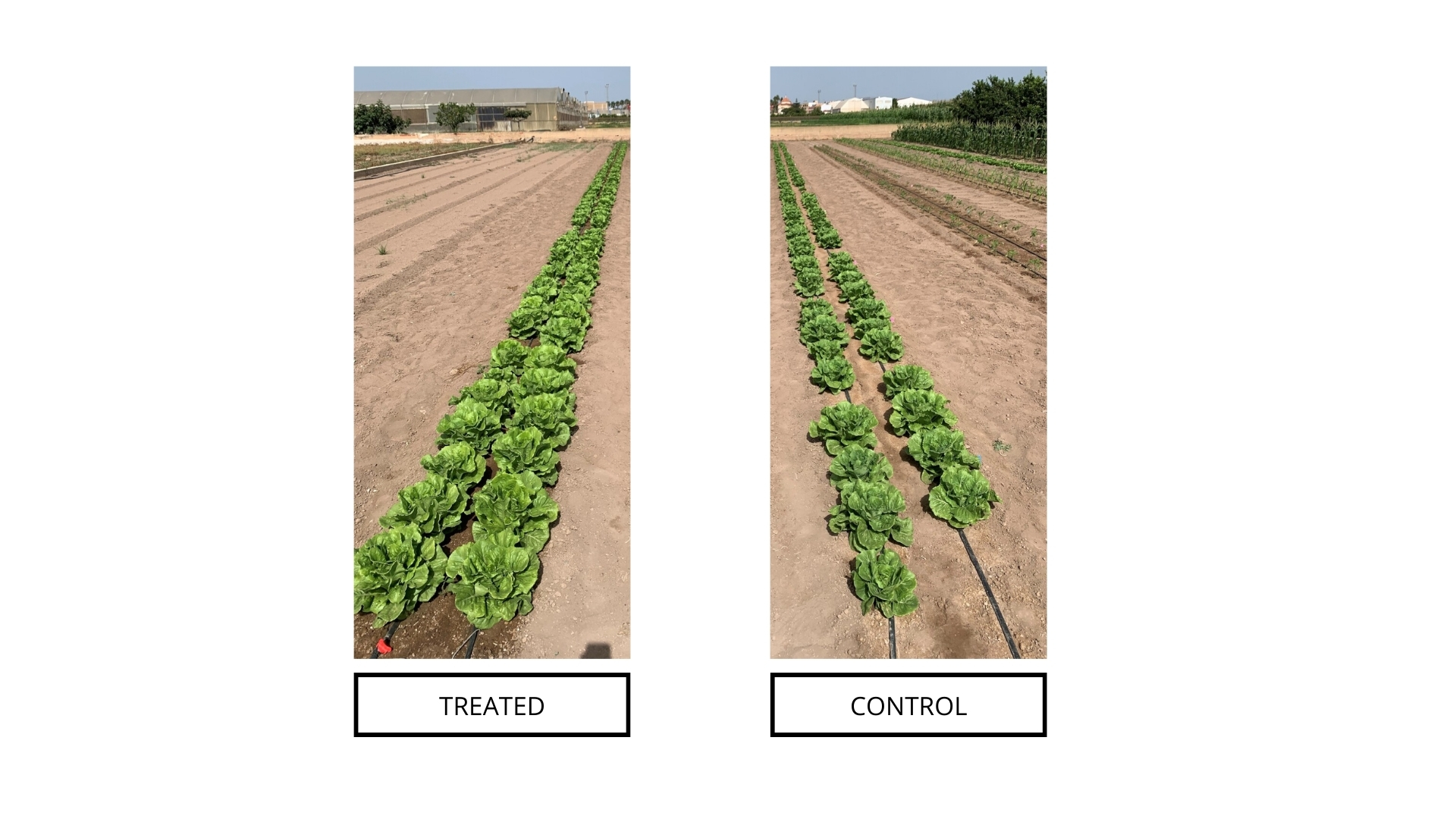Imagine your crops thriving even under heatwaves, drought, or saline soils.
What if your plants could activate their own defense systems and use nutrients more efficiently, without increasing chemical inputs?
In modern agriculture, climate change and soil degradation have become daily challenges. Farmers and agronomists alike are asking:
- How can I protect my crops from stress?
- How can I achieve better yields with fewer invesments?
The answer is increasingly found in biostimulants, a category of agricultural solutions backed by advanced science and proven results.
What Are Biostimulants?
Biostimulants are bioactive compounds or microorganisms that, when applied to plants or soils, stimulate natural processes to improve crop health and productivity. Unlike fertilizers that feed the plant directly, biostimulants enhance the plant’s own efficiency:
- Boosting nutrient absorption and transport
- Increasing tolerance to abiotic stresses like heat, drought, salinity, or frost
- Improving soil health and microbial activity
- Enhancing root development and fruit quality
- Making the plan function more efficiently
Hook: Think of biostimulants as a coach for your crops, helping them perform at their best, even under pressure.
How do biostimulants work?
The secret lies in activating the plant’s natural mechanisms:
- Triggering key genes that regulate stress tolerance and growth.
- Stimulating metabolic pathways like photosynthesis for energy efficiency and secondary metabolism for crop resilience.
- Improving nutrient and water use efficiency, reducing input losses.
- Supporting the rhizosphere, where soil microbes interact with roots for better
nutrient uptake.
In short, biostimulants unlock the plant’s own potential, making crops more resilient and productive under challenging conditions.
Difference Between Biostimulants and Fertilizers
Many growers wonder: If biostimulants don’t feed the plant, why do the crops perform better?
- Fertilizers supply nutrients like NPK and micronutrients.
- Biostimulants improve the plant’s ability to absorb and use those nutrients and to resist stress, multiplying the effectiveness of every input applied.
Micro‑hook: Used together, they create a synergy that can transform yield and quality.
Why Biostimulants Are Worth It
When biostimulants are backed by science and validated in the field, results aremeasurable:
- Tomato crops under heat stress increase number of fruits avoiding yield decrease cause by defective pollination due to high temperatures
| TREATMENTS | Fresh weight | % vs stressed control |
| BIOSTIMULANT | 259.000 | +8% |
| CONTROL | 240.000 | – |
- Lettuce subjected to a 3-day drought period (36°C max. temperature) maintains its growth.
| TREATMENTS | Fresh weight | % vs stressed control |
| BIOSTIMULANT | 178,1 | +46% |
| STRESSED CONTROL | 121,7 | – |
| UNSTRESSED CONTROL | 236,1 | +94% |

- Pepper fields under drought stress achieve strong root growth and higher protein content, even with reduced nitrogen input.
- Corn and durian plants exposed to herbicide or growth regulator stress recover faster, minimizing losses.
- Soybean under salinity stress shows activation of resistance genes, improving survival and yield.
Hook: Real results, not marketing claims, field data consistently show improved crop resilience and stable yields.
Are Biostimulants Safe?
Yes. When used as recommended, biostimulants are safe for plants, soils, and the environment:
- They reduce the need for chemical inputs, making farming practices safer for the farmer and contributing to safer, more sustainable products for the consumer. Many are compatible with organic and sustainable farming practices.
- Products like AgriTecno’s are manufactured under strict quality and consistency protocols, complying with EU Regulation 2019/1009.
AgriTecno’s Scientific Approach
Our formulations combine bioactive ingredients that work in synergy:
- Amino acids to support stress prevention and recovery and promote protein synthesis.
- Seaweed extracts rich in natural growth promoters
- Humic and fulvic acids to enhance soil structure and nutrient availability
- Targeted microorganisms to boost root-soil interactions
- Chelated micronutrients for efficient deficiency correction
- Active organic molecules like vitamins and phenolic compounds for plant metabolism
Every product is the result of genomics, metabolomics, and transcriptomics research, bridging molecular, level science with real agronomic impact.
Hook: This is why our solutions don’t just promise, they deliver in the field.
Key Takeaway
In today’s agriculture, biostimulants are no longer optional, they are strategic tools for sustainable productivity.
- They prepare crops to face stress before it happens.
- They maximize the efficiency of every input.
- They help farmers and distributors secure more consistent yields and better crop quality.
Facing a complex agronomic challenge?
Fill out our contact form and tell us more
Our technical team will guide you to the right biostimulant solution for your crops.
